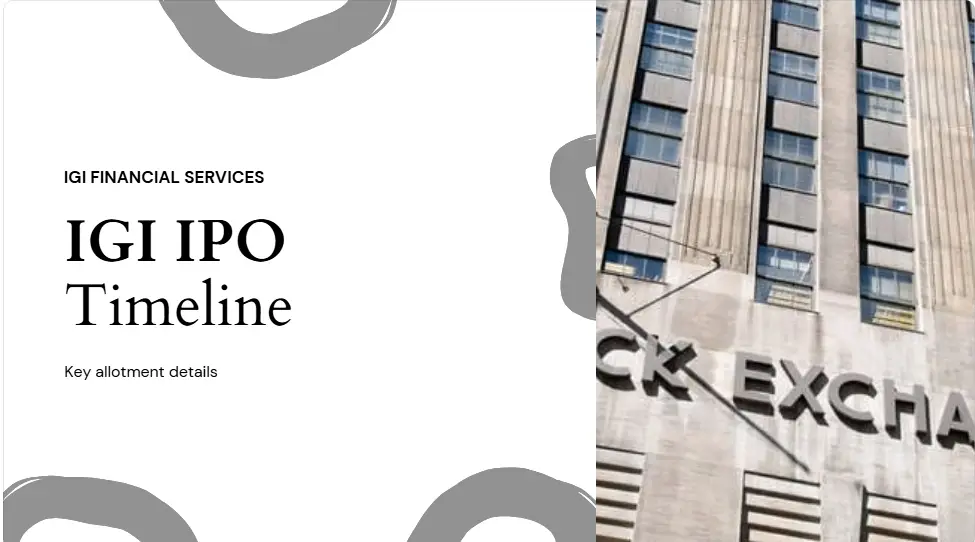🧭 What Is the Nifty Alpha 50 Index?
The Nifty Alpha 50 Index is a smart beta strategy index designed to measure the performance of 50 securities listed on the National Stock Exchange (NSE) that have demonstrated high alphas. It forms a well-diversified 50-stock portfolio.
To ensure the index is both investable and replicable, stocks are selected based on criteria like liquidity and market capitalization. The weight of each security in the index is determined by its alpha value he stock with the highest alpha receives the highest weight.
Launched on November 19, 2012, the Nifty Alpha 50 Index serves multiple purposes, including acting as a benchmark for funds and a basis for new index funds, ETFs, and structured products.
📌 Understanding Alpha
In financial terms, Alpha refers to the excess returns an investment generates over a benchmark (like the Nifty 50), after adjusting for risk. The stocks chosen for this index are, therefore, companies that have historically outperformed the broader market.
Variants of the Index
The primary variant is the Nifty Alpha 50 Total Returns Index (TRI), which accounts for dividends by assuming they are reinvested.
🔍 Index Composition & Methodology
The stock selection follows a rules-based quantitative method. The 50 stocks with the highest positive alpha values are chosen from an eligible universe, and their weights are assigned proportionally based on these alpha scores.
📋 Eligibility Criteria
| Criteria | Description |
|---|---|
| Market Cap & Liquidity | Must be in the top 300 stocks by average free-float market cap & turnover (last 6 months). |
| Listing History | Minimum of one-year listing history on the NSE. |
| Trading Frequency | Must have been traded on 100% of the trading days in the past 12 months. |
| Alpha Calculation | Based on 1-year trailing prices, adjusted for corporate actions. |
| Final Selection | Top 50 stocks with the highest positive alpha values are selected. |
| Rebalancing Period | Quarterly (End of February, May, August, November). |
This stringent process ensures that only consistently top-performing, liquid, and investable stocks are included in the index.
📊 Portfolio Characteristics
Metric
Value
Portfolio Participation
50
Weighting Method
Alpha-based weighting
Date of Launch
November 19, 2012
Base Date / Value
December 31, 2003 / 1000
Real-time Calculation
Yes
Index Variant
Total Returns Index
Rebalancing Frequency
Quarterly
📈 Performance Snapshot (as on May 30, 2025)
| Metric | Value |
|---|---|
| Portfolio Participation | 50 |
| Weighting Method | Alpha-based weighting |
| Date of Launch | November 19, 2012 |
| Base Date / Value | December 31, 2003 / 1000 |
| Real-time Calculation | Yes |
| Index Variant | Total Returns Index |
| Rebalancing Frequency | Quarterly |
The following chart visualizes the Price Return (PR) vs. Total Return (TR) across different periods, highlighting the impact of reinvested dividends.
| Period | Price Return (%) | Total Return (%) |
|---|---|---|
| Quarter to date | 11.25 | 11.32 |
| Year to date | -9.08 | -8.82 |
| 1 Year Return | -3.78 | -3.09 |
| 5 Year Return (CAGR) | 34.38 | 35.31 |
| Since Inception (CAGR) | 20.16 | 21.26 |
Risk & Volatility Measures
The chart below shows the Standard Deviation (a measure of volatility) and Beta (a measure of market-related risk) for the index over different time horizons.
| Risk Metrics | 1 yr. | 5 yrs. | Since Inception |
|---|---|---|---|
| Standard Deviation (%) | 28.05 | 21.65 | 25.10 |
| Beta vs Nifty 50 | 1.38 | 1.05 | 0.97 |
| Correlation vs Nifty 50 | 0.76 | 0.72 | 0.83 |
💰 Fundamentals in a Nutshell
Key valuation ratios provide a glimpse into the financial health and market perception of the index's constituent companies.
| Ratios | Value |
|---|---|
| Price to Earnings (P/E) | 40.78 |
| Price to Book (P/B) | 8.13 |
| Dividend Yield (%) | 0.58 |
Sector Allocation (% Weight)
This pie chart illustrates the sector distribution within the Nifty Alpha 50 index as of May 2025.
⭐ Top 10 Constituents by Weight (May 2025)
The chart below shows the top 10 companies in the index and their respective weights, highlighting the influence of the highest alpha generators.
✅ For a full list of all 50 stocks, please check the NSE Indices Official Website.
Nifty Alpha 50 vs. Nifty 50: Key Differences
| Feature | Nifty Alpha 50 | Nifty 50 |
|---|---|---|
| Selection Basis | Top 50 stocks by 1-year Alpha | Top 50 stocks by Free-Float Market Cap |
| Weighting Method | Alpha-based | Free-float Market Cap-based |
| Volatility & Risk | Higher | Lower |
| Rebalancing Frequency | Quarterly | Semi-Annually |
| Ideal For | High-return seeking, aggressive investors | Long-term, relatively conservative investors |
📌 Top Nifty Alpha 50 ETFs and Index Funds
| Fund Name | Type | Ideal For |
|---|---|---|
| Motilal Oswal Nifty Alpha 50 ETF | ETF | Investors seeking direct, low-cost index exposure |
| ICICI Prudential Alpha Low Vol 30 Fund | Mutual Fund | Investors wanting a balanced smart beta strategy |
| Invesco India Alpha Fund | Mutual Fund | Investors preferring active management for alpha generation |
Index Governance
The Nifty Alpha 50 is professionally managed by NSE Indices Limited under a robust three-tier governance framework:
- 🔹 Board of Directors: Oversees the entire operation.
- 🔹 Index Advisory Committee (Equity): Provides guidance on equity index policies.
- 🔹 Index Maintenance Sub-Committee: Manages the day-to-day maintenance and rebalancing.
This structure ensures transparency, rules-based selection, and periodic reviews to maintain the index's integrity.
💡 Investment Strategy Tips
- Smart Beta Exposure:Use it to add a performance-driven component to a portfolio, aiming to outperform traditional indices.
- Use via ETFs:ETFs are a simple and cost-effective way to get exposure to the Nifty Alpha 50.
- Volatility Hedging:Consider pairing it with low-volatility indices or assets to create a more balanced growth strategy.
- Tactical Allocation:Use it for short- to mid-term alpha generation, especially when market sentiment is bullish.
📌 Key Takeaways
- Nifty Alpha 50 consists of the highest alpha-producing stocks in India.
- The weighting is performance-based (alpha) rather than size-based (market capitalization).
- Quarterly rebalancing ensures timely inclusion of top-performing stocks.
- Best suited for smart beta, tactical, or alpha-focused investment strategies.
- Higher potential returns come with correspondingly higher risk and volatility.
🔚 Conclusion: Should You Invest in Nifty Alpha 50?
The Nifty Alpha 50 Index stands out as a performance-oriented smart beta index for investors targeting stocks with strong historical outperformance. By prioritizing alpha over size, it shifts focus towards momentum and company-specific excellence.
✅ If you are a growth investor with a high-risk tolerance and an appetite for above-average returns, the Nifty Alpha 50 can be a powerful tool in your investment arsenal. It is best accessed through ETFs or index funds for diversified exposure.
However, its high beta and significant concentration in cyclical sectors may make it less suitable for risk-averse or income-seeking investors.
⚠️ Disclaimer
This information is for educational purposes only and does not constitute investment advice, a recommendation, or a solicitation to buy or sell any securities. Investing in equity markets involves risks, including the potential loss of capital. Please consult a SEBI-registered financial advisor before making any investment decisions.
❓ FAQs
The index aims to track the top 50 NSE stocks with the highest Alpha (risk-adjusted outperformance), offering a strategy for investors seeking above-market returns through smart beta exposure.
While Nifty 50 stocks are selected and weighted by market capitalization, Nifty Alpha 50 stocks are selected and weighted based on their one-year alpha. This performance-based approach leads to a portfolio that is often more volatile but has higher return potential compared to the market-cap-weighted Nifty 50.
The index is rebalanced quarterly at the end of February, May, August, and November. This frequent updating ensures that the index consistently holds the stocks with the highest recent alpha.
You cannot invest in an index directly. However, you can gain exposure by investing in financial products that track it, such as Exchange-Traded Funds (ETFs) like the Motilal Oswal Nifty Alpha 50 ETF, or other index funds and mutual funds designed to replicate its portfolio.
No. It is best suited for aggressive investors who understand and are comfortable with high volatility and are seeking high-growth, momentum-driven strategies. Conservative or risk-averse investors may prefer broader, more stable indices like the Nifty 50.
The primary risks are higher volatility and concentration. Because it focuses on high-alpha stocks (often with high momentum), it can experience sharper downturns than the broader market during corrections. Its significant tilt towards cyclical sectors like Financial Services and Capital Goods also makes it more sensitive to economic cycles. Investors should be prepared for higher drawdowns compared to a market-cap-weighted index like the Nifty 50.






